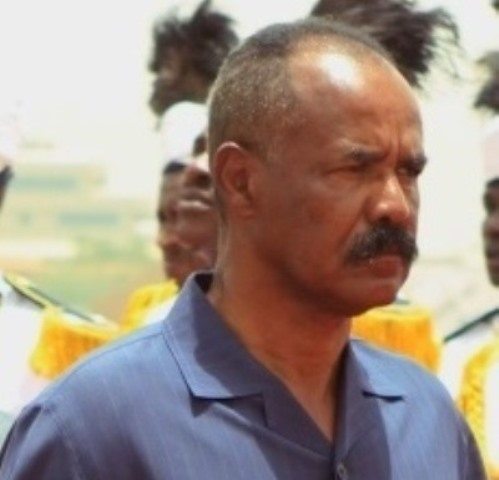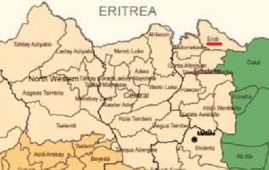Kenya’s military operation (Operation Linda Nchi) against Al-Shabaab was launched in mid-October in three directions, as reported previously in this blog. (see the map at the bottom).
There has not been progress in the southern front in the past month.
However, there has been noteworthy developments in the northern and the central front.
The Kenyan news outlet The Standard confirmed last Friday that Kenyan troops and their Somali allies captured most of the Gedo region and its capital Garbaharey, which is located in the northern border with Somalia.
The Standard reported last Friday that:
Kenya Defence Forces now control most of the strategic Gedo region in Somalia after Al Shabaab militia fled, according to Kenyan and Transitional Federal Government officials in the northern sector.
"All Shabaab is now on the run," TFG [Transitional Federal Government of Somalia] military commander in Gedo, Abbas Ibrahim Gure told The Standard.
This follows the ouster of the militia group from Burhache town. The Kenya Defence Forces (KDF) and Transitional Federal Government (TFG) troops are carrying out operations as far as Bardheere, more than 100 kilometres inside Somalia.
Abbas described Al Shabaab as "hyenas that will never change" and must be ousted by the use of force.
Despite providing some of the initial rationale for the Kenyan operation in the form of constant shelling of Kenyan towns, detonation of landmines and improvised explosive devices (IEDs) like roadside bombs, and abduction of foreigners and Kenyan security forces, operations in the northern sector of Operation Linda Nchi are the least documented.
Geographically the sector extends from Gerille town below Wajir district in Kenya up to Mandera in the North, making it the largest sector that includes such important Somali towns as Bulla Hawa (or Beled Hawa as it is called), Damasa, Burhache, Busar, Garbaharey, Bardheere (an ancient Islamic studies town), Luuq, Dolo, Catamu and Busar among others.
The northern parts of the sector are mountainous with deep valleys within the Juba Valley river system while the Southern parts are drier plains with lighter population.
Ethnically, the region it is populated by ethnic Marehan and the late despot Muhamed Siad Barre is buried in Garbaharey. Some accounts state that Barre was born there, although other authorities suspect he was born in Ethiopia1s Ogaden region, but grew up in Garbaharey. [Read more: The Standard | Shabaab flee Kenyan forces in Gedo]
In the central front, Kenyan troops are still several kilometers away from the strategic Afmadow town, despite media reports indicating that Al-Shabbab militants are fleeing the area. Yet, it appears there has been a significant there has been a significant clash that followed by Al-Shabaab claiming to have killed 11 Kenyan soldiers, which is denied by Nairobi.
The Kenyan news outlet Capital FM reported on Saturday:
Kenyan troops clashed with Somalia’s Al-Qaeda linked Shabaab militants leaving several dead, the latest casualties in weeks of dragging conflict in southern Somalia, officials and insurgents said on Friday.
One Kenyan soldier died after troops attacked a Shabaab base at Beles Qoqani some 60 kilometres (40 miles) into Somalia, killing five militants and leaving “many wounded,” said Kenyan army spokesman Emmanuel Chirchir.
However, the hardline Shabaab claimed to have ambushed Kenyan troops on Thursday with an explosive device, forcing a Kenyan armoured vehicle to stop.
“Upon stopping to survey the damage, a hail of bullets waylaid the inexperienced boys,” the insurgents said in a Twitter message, claiming to have killed 11 Kenyans but making no mention of their own casualties.
None of the casualty reports could be independently verified. [Read more on Capital News. Also reported by Nation.co.ke]
In a related news, on Friday Reuters quoted an officer of ICRC (International Committee of Red Cross) as saying: ‘More than 100 wounded people, mainly civilians, reached the medical facilities during the most recent phase of fighting’. The news also claimed increased violence in Dadaab refugee camp:
Kenya’s border region with Somalia, where the Dadaab refugee camp is located, has also witnessed some low-level violence since Nairobi’s cross-border campaign began.
On Thursday, Kenyan police said suspected al Shabaab militants had shot and fatally wounded a Somali member of a local security committee in Dadaab who had been assisting Kenyan forces on security issues in the camp. [Read more: ICRC sends aid for casualties in Somalia fighting | Reuters]
Another news that Gunment killed at least 2 in northeast Kenya on Saturday. Reuters reported:
Gunmen sprayed bullets at New Year revellers in two bars in northeastern Kenya on Sunday, killing at least two people, a witness and police said, the latest in a wave of attacks near the border with Somalia.
A worker at one of the pubs in Garissa town said gunmen approached in a vehicle, fired at the bars and then drove away.
"The guys fired from the vehicle. They first shot the guard, (and then) shot more bullets at those who tried to leave and those who were at the entrance," said the witness who declined to be named.
North Eastern provincial police commander Leo Nyongesa said two people had been confirmed dead. A medic, who refused to be identified, said 28 people had been wounded, including security officers and several women. Read more: Gunmen attack bars in northeast Kenya, at least 2 dead | World | Reuters]
*************
Check the Kenya archive for previous and upcoming posts.






